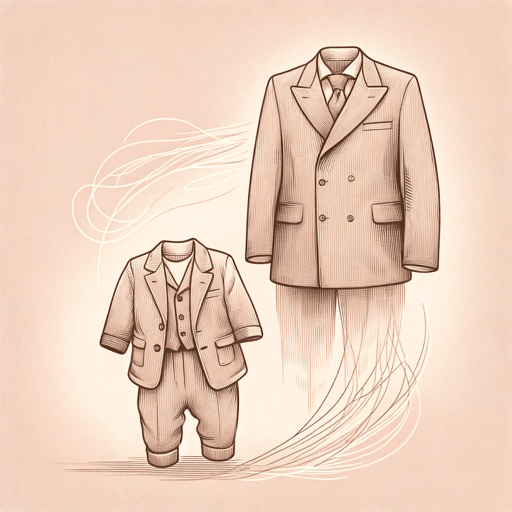21 pages • 42 minutes read
Edna St. Vincent MillayI Will Put Chaos Into Fourteen Lines
Fiction | Poem | Adult | Published in 1949A modern alternative to SparkNotes and CliffsNotes, SuperSummary offers high-quality Study Guides with detailed chapter summaries and analysis of major themes, characters, and more.
Summary and Study Guide
Overview
“I Will Put Chaos Into Fourteen Lines” is a sonnet written by Edna St. Vincent Millay. This 14-line poem was published in 1954 as part of her posthumous collection Mine the Harvest. The sonnet follows a first-person speaker as they attempt to contain and control the Chaos around them by establishing a sense of order through their writing/text. While the poem’s exact date of composition is unknown, there are apparent influences in the text of World War II and other personal events from Millay’s life. These contemporary influences contrast with the traditional and prescribed structure of the sonnet form itself. Millay’s sonnet has a rather positive outlook to present to readers: nullifying the seemingly terrifying power of Chaos, reclaiming order and the speaker’s own power of self, and trying to make the best out of any situation. Through the sonnet structure itself, through Millay’s usage of personification, and through the implementation of enjambment and full stops, the speaker reclaims control over their narrative.
Poet Biography
Edna St. Vincent Millay was born in 1892 in Rockland, Maine. She lived with her two younger sisters and her mother Cora, who divorced the girls’ unreliable father in 1901. Cora was a traveling nurse, and beginning when Millay was nine years old, her mother would sometimes leave for extended periods of time and Millay would be left to care for her sisters on her own. When she was home, though, Cora often read to her book-loving daughter and encouraged her writing. Even as a child, Millay sent in poems for publication in St. Nicholas. After graduating high school, Millay couldn’t afford college and kept house for her mother. The tedium of domestic life affected Millay’s creativity, and “[s]he began writing in her diary to an imaginary lover, and their fantasy assignations broke up the monotony” (“How Fame Fed on Edna St. Vincent Millay.” The New Yorker, 9 May 2022).
Millay’s luck turned when she attended a party in Maine in the summer of 1912 and recited a poem she composed: “Renascence.” The bleak and nostalgic work impressed one particular guest, Caroline B. Dow, so much so that Dow insisted Millay apply on scholarship to Vassar and Dow would provide funding for all of her other expenses. “Renascence” appeared in the poetry anthology The Lyric Year in 1912, and in the fall of 1913 Millay began her studies at Vassar at the age of 21. While at Vassar Millay was known for her unconventional and rebellious character, though she also was productive and active in campus events and activities. She wrote for The Vassar Miscellany, wrote the “Baccalaureate Hymn” for her class’s 1917 graduation, and acted in a play she wrote herself titled The Princess Marries the Page. Millay nearly didn’t graduate from Vassar due to an unknown, rebellious act she committed. However, after 120 faculty members signed a petition in support of Millay, she was permitted to receive her diploma.
After graduation, Millay moved with her younger sister Norma to Greenwich Village in New York City, where they lived in an extremely small attic apartment. Millay wanted to pursue a career in acting, and she and Norma joined the Provincetown Players. Millay also continued to produce short stories and other prose works under the pseudonym Nancy Boyd and published poems in Vanity Fair and the Forum. The sisters became acquainted with other writers and actors during their time living in the Village, including E. E. Cummings and Susan Glaspell, and they made just enough to survive, often relying “on male suitors to buy their dinners” ( “How Fame Fed on Edna St. Vincent Millay.” The New Yorker, 9 May 2022).
Millay’s publication of her collection of poetry A Few Figs from Thistles is what really started to garner her attention. The works acted as anthems for the bohemian-spirited readers, serving as “maxims for the young men and women trying to live as freely and wildly as possible” (“Edna St. Vincent Millay.”Vassar Encyclopedia, 2012). The poems “First Fig,” “Second Fig,” and “The Penitent” appeared earlier in 1918 in Poetry after Millay requested an advance from the publication. Attributes of the poetry produced during this period of Millay’s life include a focus on “praise of the ephemeral,” “the doomed burst of romantic feeling,” “love’s paradoxes,” and “the way inconstancy can inflame ardor” (“How Fame Fed on Edna St. Vincent Millay.”).
Other publications followed, and in 1921 Millay left to travel through Europe while writing for Vanity Fair. The contract with Vanity Fair included producing two prose pieces a month for the publication. In addition to this work, Millay published another collection of poetry (Second April) as well as two dramatic works (The Lamp and the Bell and Two Slatterns and a King). When she returned to New York in 1923, Millay received the Pulitzer Prize for Poetry for her collection titled The Harp Weaver and Other Poems. It was also in 1923 that Millay met and married Eugen Jan Boissevain, a Dutch coffee trader and aristocrat. Millay was so sick on her wedding day with intestinal issues that she went straight from the ceremony to the hospital for surgery.
After attending reading tours and finally being able to go on their honeymoon, the couple purchased a 600-acre farm located in Austerlitz, New York, where they could escape from the world. The land was partly a former berry farm and was located a few hours away from Manhattan. The married pair named their farm Steepletop after the Steeplebush that grew on the property. Millay and Boissevain worked to renovate the farm and make it into the haven of their dreams. It was here that Millay wrote her libretto The King’s Henchman, which was published in 1927.
Works produced by Millay during these later years at Steepletop included The Buck in the Snow published in 1928, Fatal Interview published in 1931, Wine from These Grapes published in 1934, Conversation at Midnight published in 1936, Huntsman, What Quarry? published in 1939, and Make Bright the Arrows published in 1940. Despite their apparent happiness at Steepletop, Millay and Boissevain were not out of reach of the world and its darker inclinations and events. After a car accident, Millay was prescribed morphine, which she would later become addicted to. When World War II began, Millay cast off her pacifist beliefs to write to support the Allied war efforts. Her most popular propaganda poem was “The Murder of Lidice” (1942) about the destruction of a small German town. Millay also suffered a nervous breakdown, which led her to cease writing for a time. She and her husband also found themselves in debt in their later years.
In 1949, Boissevain died after having surgery for lung cancer, leaving Millay to reside at Steepletop on her own. Millay “found life without Eugen difficult and lonely,” and she “refused to see visitors and unplugged the phone because she missed hearing Eugen’s voice when he answered a call” (Peppe, Holly. “The Poet of Steepletop.” Edna St. Vincent Millay Society at Steepletop, 2022). Millay did begin to write again through her grief, but on October 18, 1950, she slipped on the stairs at Steepletop, fell, and died. Some sources rather claim that she died of heart failure sitting on the stairs as opposed to falling down them. Her last collection of poetry, Mine the Harvest, was published posthumously in 1954.
Poem Text
St. Vincent, Edna Millay. “I Will Put Chaos Into Fourteen Lines.” Mine the Harvest. Harper & Brothers, New York, 1954.
Summary
The first-person speaker opens Millay’s sonnet with a bold claim: they will confine and trap Chaos. They intend on using the power of poetry and the order the sonnet structure provides to keep Chaos tamed. The speaker goes on to contend that nothing Chaos can do will free this masculinized and villainized entity. Chaos can conjure natural disasters and threaten the speaker with destruction and harm, but it will all be useless. Chaos’s power will be ineffective amidst the order and control the speaker establishes over it. As the speaker tames and controls Chaos, they reflect on how their trials and tribulations are now over. They have indeed conquered their nemesis and overcome all of their obstacles. In retrospect, the speaker acknowledges just how insignificant and futile Chaos and his powers actually are. They are not even worth the speaker’s time and worry. Rather than dwelling on the past destruction, the speaker plans on looking ahead at more positive outcomes.
Related Titles
By Edna St. Vincent Millay

An Ancient Gesture
Edna St. Vincent Millay

Conscientious Objector
Edna St. Vincent Millay

Ebb
Edna St. Vincent Millay

Lament
Edna St. Vincent Millay

Not In A Silver Casket Cool With Pearls
Edna St. Vincent Millay

Song of a Second April
Edna St. Vincent Millay

Spring
Edna St. Vincent Millay

The Ballad of the Harp-Weaver
Edna St. Vincent Millay

The Courage That My Mother Had
Edna St. Vincent Millay

The Spring And The Fall
Edna St. Vincent Millay

Travel
Edna St. Vincent Millay

